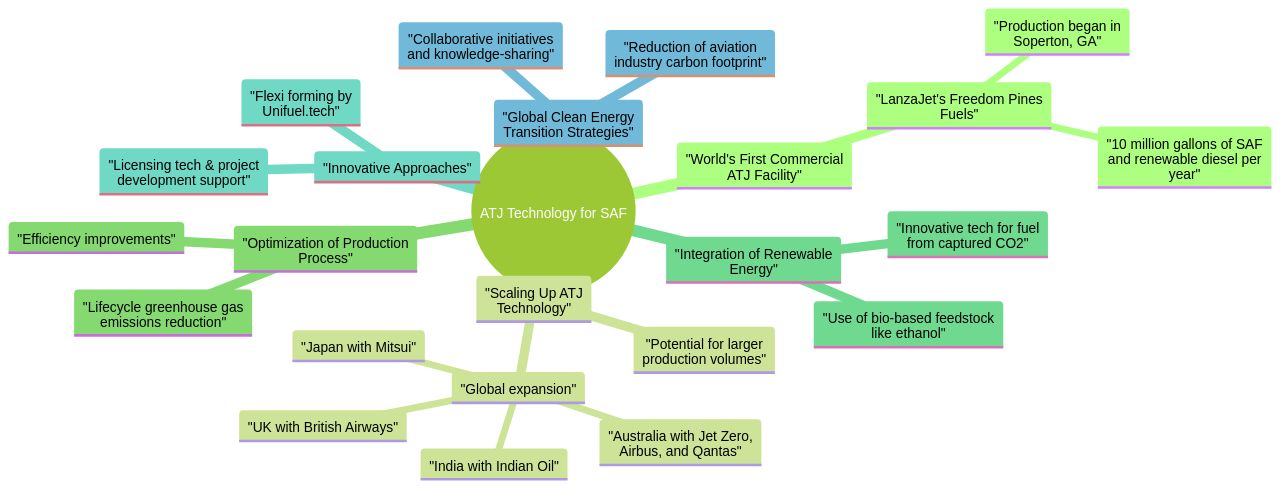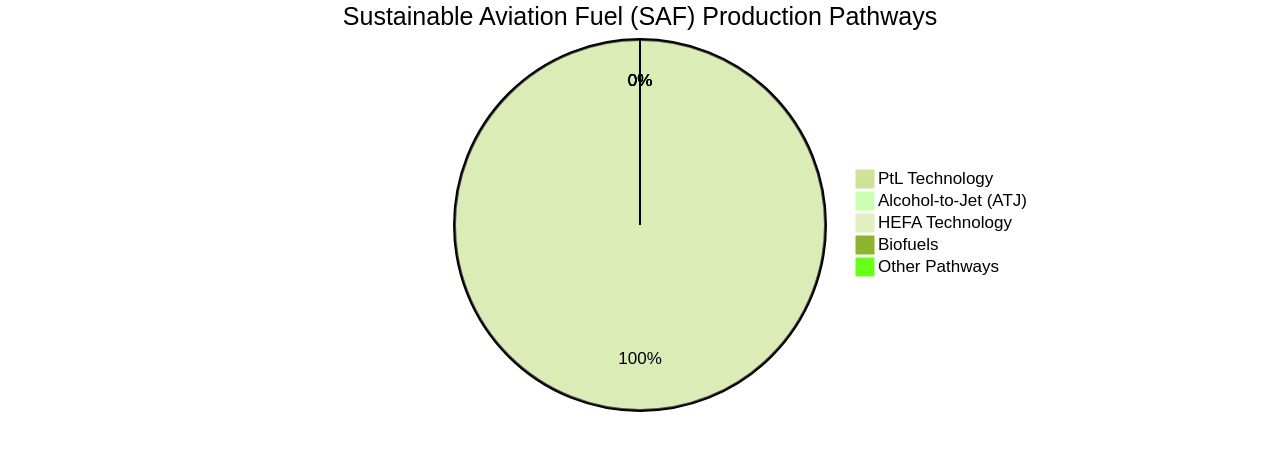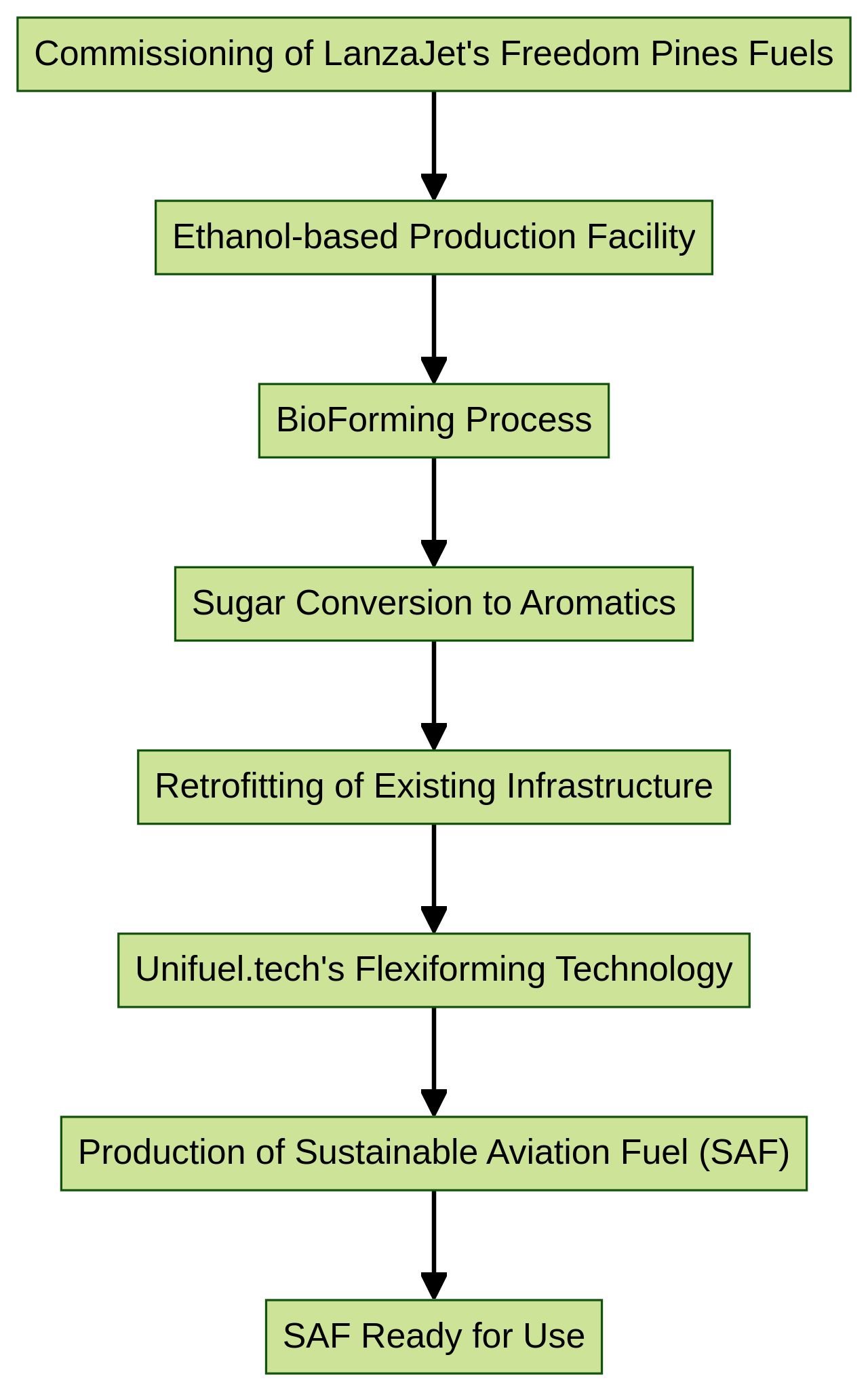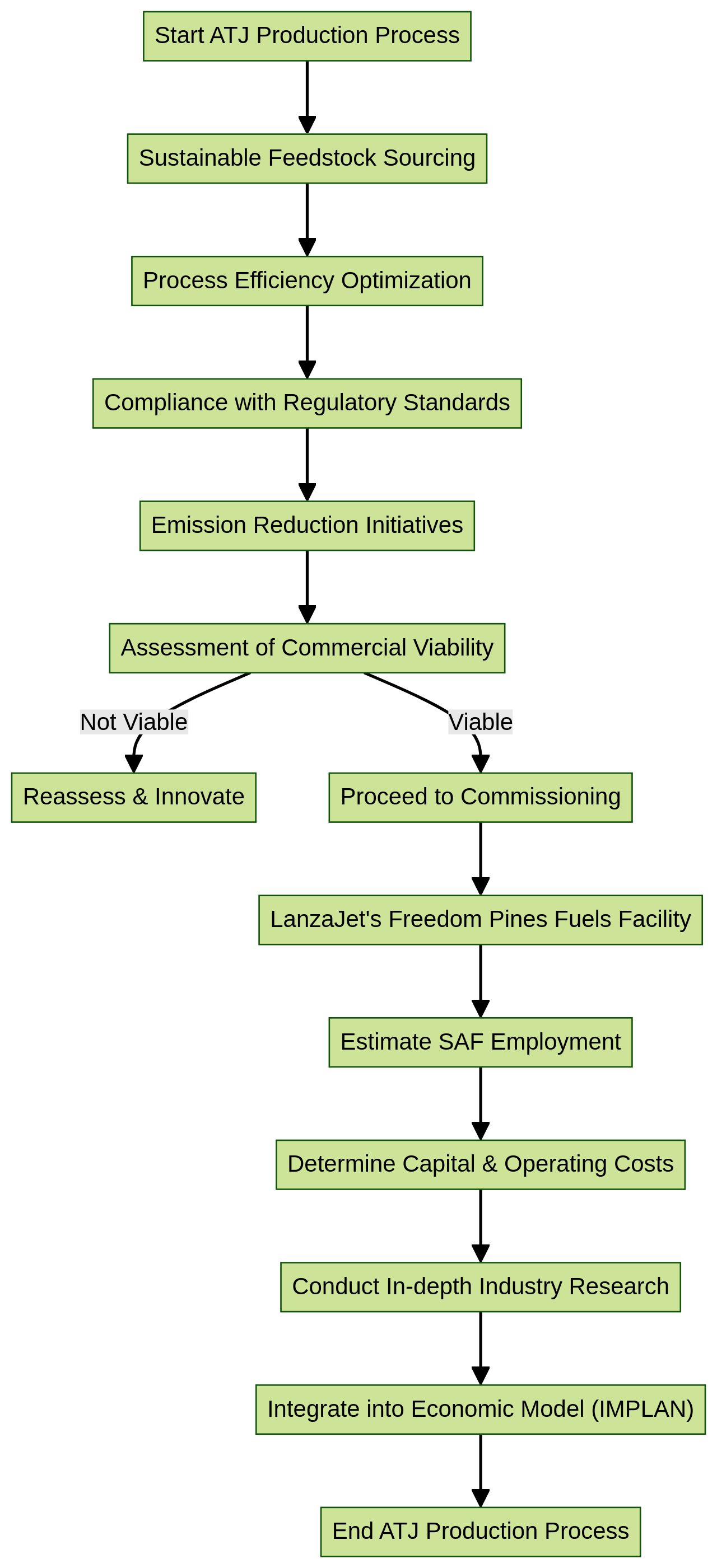Introduction
Harnessing the transformative power of biotechnology, the production of Alcohol to Jet (ATJ) fuel utilizes engineered microorganisms to ferment renewable alcohols into hydrocarbons, which mirror the properties of conventional jet fuel. In this article, we will explore the role of biotechnology in ATJ production and its impact on the sustainable aviation fuel (SAF) industry.
We will delve into the advancements in cost and environmental optimization of ATJ technology, as well as the multi-objective optimization of ATJ supply chain systems. Furthermore, we will compare ATJ with other renewable jet fuel pathways and examine the economic and environmental factors involved in ATJ production. Lastly, we will discuss the challenges and future prospects of ATJ production and how innovative technologies like Flexiforming are paving the way for a more sustainable and efficient ATJ production landscape.
The Role of Biotechnology in ATJ Production
Harnessing the transformative power of biotechnology, the production of Alcohol to Jet (ATJ) fuel utilizes engineered microorganisms to ferment renewable alcohols into hydrocarbons, which mirror the properties of conventional jet fuel. The biocatalytic process, known for its high selectivity and scalability, capitalizes on sustainable feedstocks to make significant strides in eco-friendly Sustainable Aviation Fuel (SAF) production.
A prime example of this innovation is the Leap-In Transposase platform, a technology that has garnered attention for its robust and efficient production capabilities, not only in SAF but also in high-quality protein pharmaceuticals. In addressing the challenge of scalability, single-use technologies in biotechnology labs have become increasingly prevalent, facilitating adaptable production cycles crucial for manufacturing cell and gene therapies.
Algae, too, plays a pivotal role in biotechnology's reach, as it not only absorbs atmospheric carbon dioxide but also emits less carbon, showcasing a commitment to environmental preservation. This approach has broader applications, including in the cultivation of meat and the engineering of artificial organs.
One of the most ambitious projects in SAF production is the proposed facility near Forsmark, Sweden, which plans to harness electrofuel, a type of SAF. By leveraging fossil-free electricity, water, and recycled carbon dioxide, the facility aims to produce ethanol and subsequently convert it to aviation electrofuel.
This process, which relies on carbon capture usage (CCU), exemplifies a future where SAF production significantly reduces the carbon footprint. Flying contributes around 2% of global carbon emissions, a figure that's rising rapidly, making the decarbonization of aviation a paramount challenge. While electric planes are on the horizon, the immediate solution lies in greener kerosene alternatives. The new production facility, expected by 2030, and innovations like the BioForming technology, which enables the use of 100% SAF without modifications to current infrastructure, are pivotal steps toward this goal. These advancements not only promise to revolutionize SAF production but also offer solutions that are both sustainable and scalable.
Case Studies on ATJ Production: Cost and Environmental Optimization
Advancements in Alcohol-to-Jet (ATJ) technology are crucial for the sustainable aviation fuel (SAF) industry, with a focus on efficiency and renewable integration. As the world's first commercial ATJ facility, LanzaJet's Freedom Pines Fuels in Soperton, GA, signals a significant milestone.
Although no active commercial facilities currently exist, the anticipation around this plant demonstrates the potential for ATJ technology to scale up and meet aviation's growing demand for cleaner fuels. The production process must be meticulously optimized, considering the high costs of downtime and equipment defects.
For instance, the Hot Embossing process demands high-frequency machines that are often outsourced due to high demand, raising questions about the economic feasibility of investing in additional machinery. Operational costs, including the time-dependent depreciation of equipment, play a significant role in assessing the viability of ATJ production.
Furthermore, integrating renewable energy sources like solar PV arrays and heat pumps has shown to maintain a consistent temperature of 23.9°C in production facilities, enhancing both operational efficiency and environmental sustainability. In an innovative approach to optimizing ATJ technology, Unifuel.
Tech offers flexi forming, a technology that enables operators to tailor their decarbonization pace. This solution can be implemented in existing infrastructure, such as idle hydrotreaters or reformers, which can significantly reduce capital expenditure and the carbon footprint of the production process. By providing details on feedstock, desired products, and current facility setup, operators can receive a tailored application strategy from Unifuel.tech within a day, streamlining the transition to more sustainable fuel production methods. Globally, governments and firms are strategizing to secure a foothold in the clean energy economy, focusing on innovations in ATJ and other renewable fuels. This aligns with the EU's support for the Steelanol project, which aims to optimize ethanol production from an environmental perspective, backed by a Horizon 2020 subsidy of 10.2 Euro. As ATJ technology evolves, it's imperative to understand the environmental performance through life cycle assessments (LCAs), ensuring stakeholders can make informed comparisons between various fuels and their societal impacts.

Multi-objective Optimization of ATJ Supply Chain Systems
In the realm of ATJ production, the implementation of multi-objective optimization techniques stands as a pivotal advancement for the efficiency of supply chain systems. By evaluating a spectrum of criteria, including cost, carbon footprint, and energy consumption, these techniques are critical for deriving the most effective configuration of feedstock sourcing, conversion processes, and distribution logistics.
The initial phase involves selecting the supply chain design structure through meta-heuristic algorithms, which is then refined using linear programming to optimize the flow through the network, thereby diminishing computational time and search space. This dual-phase methodology allows for a thorough examination of complex, high-dimensional problem spaces.
The multi-echelon, multi-product supply chain model presented takes into account the unpredictability of demand and lead times, leading to the formation of hybrid nodes with both dependent and independent demands—a novel concept in supply chain inventory management. Furthermore, the model facilitates the strategic placement of manufacturing plants across the network, empowering the production of various goods at each node.
To bolster efficiency, a nonlinear programming model is advocated, which can be restructured into a Quadratically Constrained Program (QCP), substantially cutting computational time. The adeptness of this model has been corroborated through both hypothetical and empirical case studies. It also integrates inventory levels and policies along the supply chain, tackling the intricacies of inventory control amid uncertain customer demand and lead time fluctuations. The innovative approach of reconciling uncertainties, optimizing resources, and ensuring effective inventory management heralds a promising future for ATJ production efficiency.
Comparison of ATJ with Other Renewable Jet Fuel Pathways
The innovative Alcohol-to-Jet (ATJ) technology holds promise for advancing Sustainable Aviation Fuel (SAF) production, addressing the aviation industry's pressing need for emissions reduction. A pioneering approach in Forsmark, Sweden, showcases the potential of ATJ by leveraging electrofuels.
Utilizing fossil-free electricity, water, and recycled CO2 from district heating, this method exemplifies a circular energy economy, transforming captured carbon into synthetic kerosene and slashing CO2 emissions from aircraft significantly, although exact reduction metrics are yet to be ascertained. Despite these advances, the SAF market confronts challenges.
Current global SAF production falls short of demand, with biofuels expected to fulfill 92% of the aviation sector's low-emission fuel needs by 2030. Yet, the cost of SAF remains a hurdle, being two to five times pricier than conventional jet fuel.
Moreover, the industry's 2050 emission targets necessitate not just incremental, but substantial emission reductions. In this context, HEFA technology emerges as a front-runner for SAF production due to its competitive edge in conversion costs and yields.
However, a comprehensive analysis comparing various SAF pathways is pending. Meanwhile, Unifuel.tech's flexiforming solution, adaptable to existing refinery infrastructure, could prove a game-changer, promising quicker deployment and lower carbon intensity. The company's commitment to swift response times aligns with the urgency to scale up SAF production and make it more economically viable. Flexiforming allows operators to tailor the pace of their decarbonization efforts and can be integrated into idle hydrotreaters or reformers, thus minimizing additional capital investments. As the aviation industry strives towards net-zero emissions by 2050, with companies like Airbus aiming for 100% SAF-capable aircraft by 2030, the integration of SAF into existing infrastructure, capable of reducing emissions by 60-100%, becomes imperative. The collective effort of stakeholders, as seen in Canada's SAF value chain collaboration platform, is crucial in fostering innovation and increasing SAF uptake globally.

Economic and Environmental Factors in ATJ Production
The imminent commissioning of LanzaJet's Freedom Pines Fuels facility in Soperton, GA, represents a pivotal moment for the Alcohol-to-Jet (ATJ) sector. This ethanol-based production site is the first of its kind and is expected to significantly contribute to the Sustainable Aviation Fuel (SAF) market, addressing both economic and environmental considerations.
With no current commercial ATJ operations, the anticipation surrounding this facility is based on a methodology informed by expert interviews, literature reviews, and analysis conducted by Rhodium, which links anticipated costs to the input-output economic model IMPLAN. This approach provides a framework for understanding the potential impact of SAF on employment in adjacent industries and the broader economy.
The production of SAF, particularly through ATJ processes, offers a 'drop-in' solution for decarbonizing global aviation, capable of seamlessly integrating with existing jet engines and fueling infrastructure. This innovation comes at a time when supplies of alternative fuels are limited and costly, often two to five times the price of conventional jet fuel.
Despite the challenges, the production of ATJ fuel is seen as a critical step towards achieving significant reductions in lifecycle greenhouse gas emissions, with the potential to minimize these emissions by at least 70%. Moreover, recent breakthroughs in bio-based aromatics production have enabled flights to operate on 100% SAF, as demonstrated by Virgin Atlantic's trans-Atlantic crossing.
The BioForming process converts sugars to aromatics (S2A), providing the necessary jet fuel components without reliance on conventional fuel blending, and can be adapted to various plant sugars available globally. Alongside such innovations, Unifuel.tech's Flexiforming technology introduces additional flexibility in the decarbonization pathway. It enables the retrofitting of existing infrastructure, such as idle hydrotreaters or reformers, with a solution that adjusts to the operator's desired pace of carbon intensity reduction. This adaptability can result in a more efficient capital allocation, as it repurposes current assets towards the production of SAF. The responsiveness of Unifuel.tech, promising inquiries to be addressed within 24 hours, and its association with Universal Fuel Technologies, underscores the industry's momentum in embracing advanced solutions to meet environmental targets while maintaining economic viability.

Challenges and Future Prospects of ATJ Production
The Alcohol-to-Jet (ATJ) sector is navigating the complexities of sustainable feedstock sourcing, process efficiency, and compliance with regulatory standards. Companies are under pressure to reduce emissions and waste, as seen in Rivian's net-zero ambitions and St. James's focus on production velocity.
The industry is also leveraging automation and new technologies, aligning with the U.S. Army's commitment to modern manufacturing practices. ATR's efforts to decrease CO2 emissions and operational costs while enhancing efficiency mirror the ATJ industry's drive toward sustainability and superior performance.
The production process faces challenges such as complexity, infrastructure demands, rigorous quality control, and high capital investment. Innovations like closed and automated systems with single-use components and advanced process controls are emerging to address these issues, simplifying infrastructure and improving quality control.
Amidst these challenges, the ATJ sector is poised for growth through ongoing research and development aimed at optimizing technology. In this dynamic environment, Unifuel.
Tech introduces Flexiforming, a technology that offers operators the flexibility to set their decarbonization pace. By utilizing idle hydrotreaters or reformers, Flexiforming presents a cost-effective means to reduce capital expenditure and carbon intensity. This solution is particularly relevant for ATJ production, where technological innovation is paramount. Unifuel.tech, a subsidiary of Universal Fuel Technologies, engages with operators to tailor Flexiforming to their specific needs, based on feedstock, target products, and facility infrastructure. Their commitment to rapid response and customer engagement within 24 hours aligns with the industry's need for swift, collaborative advancements. The integration of Flexi forming into ATJ manufacturing could represent a significant stride in overcoming the sector's infrastructural and environmental hurdles, reinforcing the momentum towards a more sustainable and efficient ATJ production landscape.

Conclusion
In conclusion, biotechnology-driven ATJ fuel production offers a transformative solution for the sustainable aviation fuel (SAF) industry. With engineered microorganisms and renewable alcohols, ATJ fuel mirrors conventional jet fuel properties while reducing environmental impact. Advancements in cost and environmental optimization, like single-use technologies and renewable energy integration, enhance operational efficiency and sustainability in ATJ technology.
Flexiforming provides operators with flexibility to tailor decarbonization efforts, minimizing capital investments. Multi-objective optimization of ATJ supply chain systems improves efficiency by considering criteria like cost, carbon footprint, and energy consumption. This approach ensures effective configuration of feedstock sourcing, conversion processes, and distribution logistics while managing inventory.
Comparing ATJ with other renewable jet fuel pathways reveals its potential for emissions reduction in aviation. HEFA technology and Flexiforming offer advantages in conversion costs, yields, and deployment speed. Integrating SAF into existing infrastructure is crucial for achieving net-zero emissions.
Economic considerations play a significant role in ATJ production. LanzaJet's Freedom Pines Fuels facility demonstrates potential impact on employment and the economy. ATJ fuel offers a drop-in solution that reduces greenhouse gas emissions while seamlessly integrating with existing infrastructure.
Ongoing research and development drive growth in the ATJ sector despite challenges like feedstock sourcing and regulatory compliance. Innovations like closed systems simplify infrastructure and improve quality control. Flexiforming reduces capital expenditure and carbon intensity.
Overall, biotechnology-driven ATJ production holds promise for a more sustainable aviation industry. With continued advancements and collaborations among stakeholders, significant reductions in carbon emissions can be achieved while maintaining economic viability. The future prospects for ATJ production are bright as we pave the way towards a greener aviation landscape.




